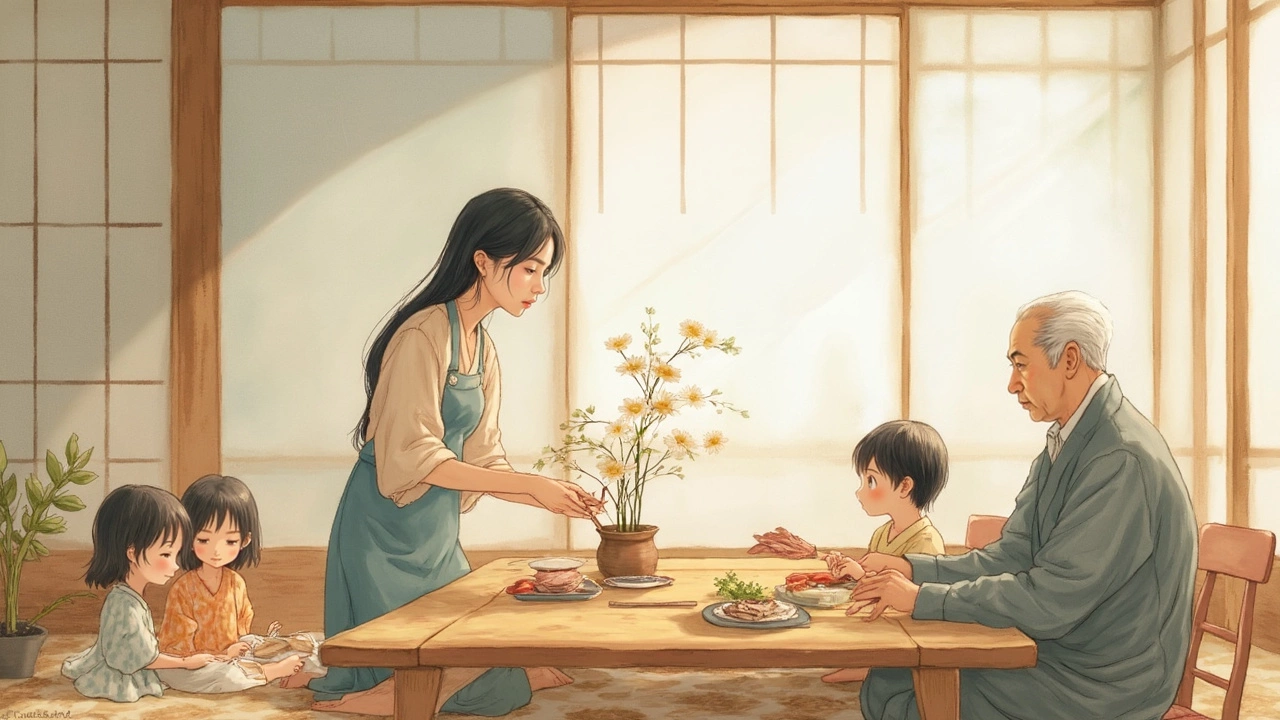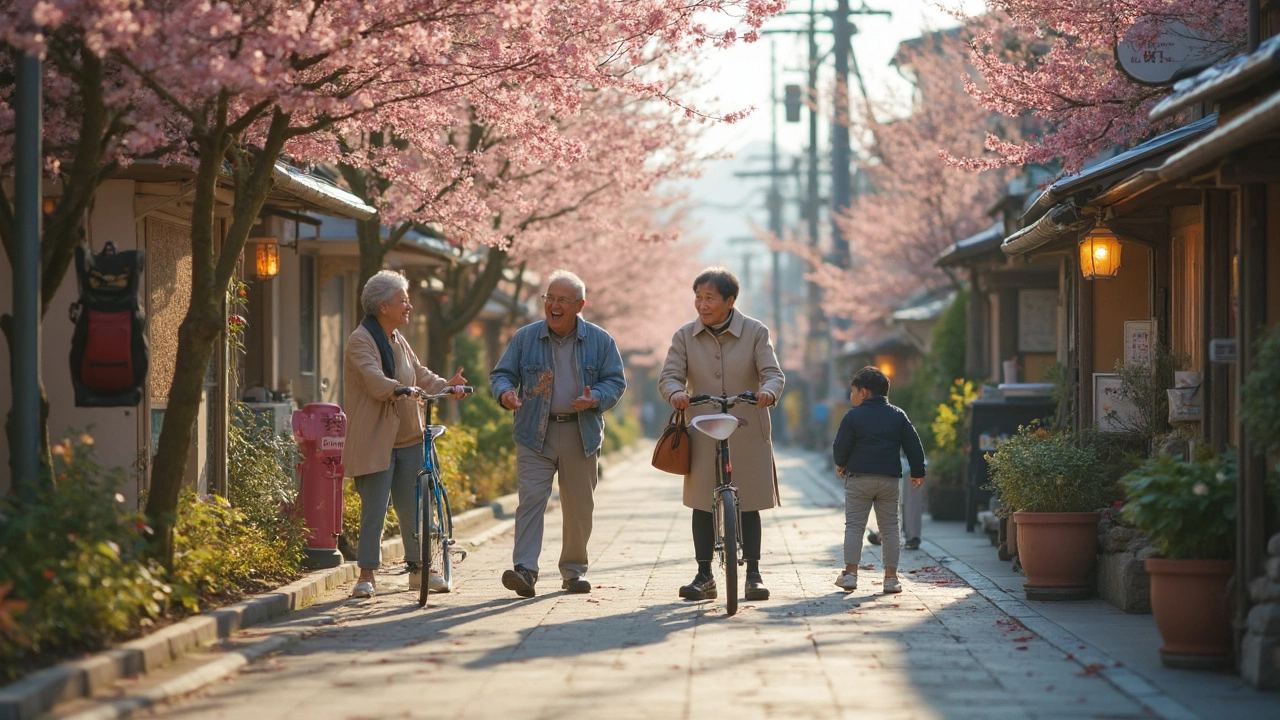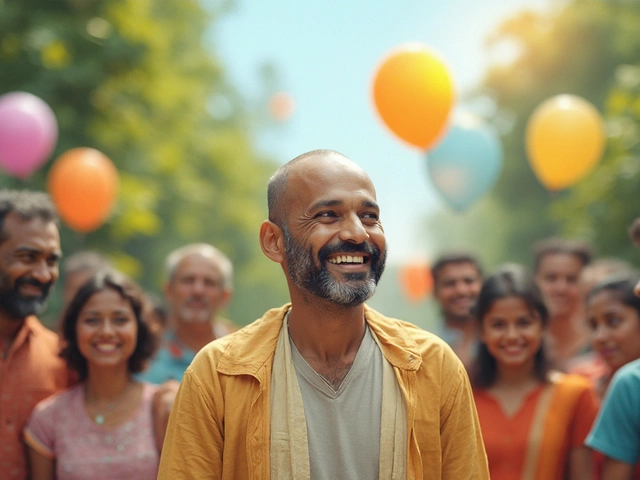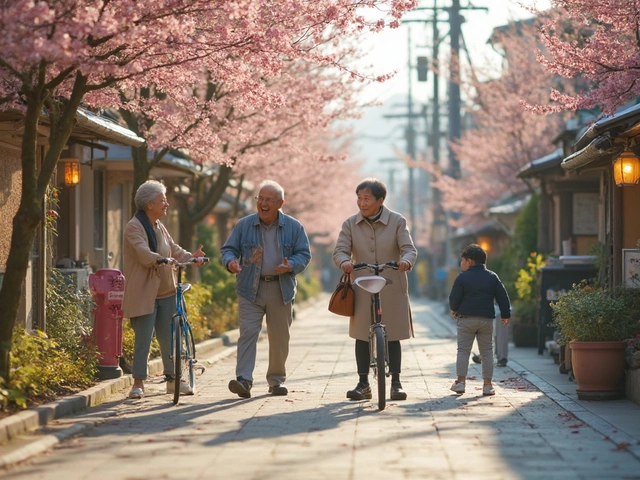When it comes to the gold standard of health, Japan just keeps winning. The average life expectancy here tops 84, beating out most countries by years. You see people in their eighties cycling to the market, not tucked away in care homes. It’s not just genes—Japan’s everyday life is set up to keep folks healthy without trying too hard.
If you’re wondering what makes the difference, it’s not magic. Their food is big on fish, veggies, fermented stuff, and just the right amount of rice. Almost no one actually eats until they’re super full—'hara hachi bu,' or stopping at 80%, is like an unspoken rule. Plus, people walk or bike everywhere, so they get exercise without stepping foot in a gym.
This isn’t just nice for locals. Japan’s great reputation has turned it into a hotspot for medical tourism. If you want a blend of high-quality hospitals and a health-focused culture while you recover, this is where you’d go. Wonder how all this plays out day-to-day? That’s what we’re digging into next.
- Why Japan Dominates Global Health Rankings
- Secrets from Japanese Daily Life
- Japan’s Healthcare System: What Sets It Apart
- Medical Tourism in Japan: What to Expect
- Simple Health Tips Inspired by Japan
Why Japan Dominates Global Health Rankings
There’s no sugarcoating it—Japan just gets health right. If you look at the numbers, the proof is in plain sight. The World Health Organization reports Japan’s life expectancy is over 84 years, making it the highest in the world. People stay active well into old age, and rates of major diseases like heart disease and diabetes are much lower than in lots of other countries.
Healthiest country isn't a badge Japan wears for nothing. Their stuff isn’t just hype—years of global health reports back it up. To put things in perspective, check out these actual stats:
| Country | Average Life Expectancy (2024) | Obesity Rate (%) |
|---|---|---|
| Japan | 84.6 | 4.3 |
| USA | 76.4 | 36.2 |
| Italy | 83.2 | 19.8 |
Compared to other top countries, Japan’s rates for killer conditions like heart disease are way lower. For example, strokes and heart attacks aren’t nearly as common, partly because the average diet is loaded with fish, soy, and tiny portions of red meat and sugar.
Japan also has one of the lowest infant mortality rates. Kids here get regular health checks, and preventive screenings are everywhere. Everyone has universal health insurance, which takes away the worry about whether you can see a doctor or not.
If you ask the experts, they’ll credit both culture and policy. As Michael Marmot, a world-respected professor at University College London, put it:
“Japan has achieved the best combination of health care and healthy social and daily life. It’s not just about what you eat, but how your society is set up to help you live well for longer.”
So, you don’t see Japan bankrolling its longevity on high-tech medicine alone. It’s the basics, done right, repeated every day. No gimmicks, just consistency and smart systems that everyone trusts and uses.
Secrets from Japanese Daily Life
Japan’s everyday routines play a huge role in why this country leads the world in health. Their habits aren’t just about fancy diets or high-tech gyms—they’re surprisingly down-to-earth and doable.
One big thing is how meals work. The traditional Japanese diet includes lots of fish, seasonal vegetables, tofu, seaweed, and fermented foods like miso and natto. Red meat and processed stuff take a back seat. Eating smaller portions is standard. 'Hara hachi bu' is a popular saying in Okinawa, meaning you eat until you’re about 80% full, not stuffed. This habit is linked to lower obesity rates and longer lives.
Movement is built into the day, not something squeezed in. People walk, bike, or use trains, which means you’re moving way more than if you’re sitting in a car all day. Kids walk to school, adults walk to the station, and there’s always someone getting around by bicycle. It sounds simple, but all that daily movement adds up and keeps people fit without a lot of effort.
Social connections matter too. Japanese culture encourages group activities, from neighborhood cleanups to morning radio exercises in parks called 'Rajio Taisō.' Even retirees join local clubs or garden plots, staying involved and active. Researchers have found these social bonds lower stress, boost mental health, and reduce risks like heart disease.
A focus on cleanliness is another standout. You’ll notice people washing hands before meals and removing shoes at the door. Public spaces and even city streets are kept clean. Avoiding germs this way cuts down on everyday illnesses.
Basically, Japan’s not just randomly the healthiest country. Their daily routines—what they eat, how they move, how they treat others—keep them ahead of the game. And a lot of these habits can work anywhere, not just in Japan.

Japan’s Healthcare System: What Sets It Apart
Ever wondered why the Japanese live so long and rarely seem worried about medical bills? Their healthcare system is a big reason. Japan has what’s called a universal healthcare system, so everyone is covered by health insurance—no one gets left out, not even non-citizens staying in Japan for a while. It all started back in 1961, and since then, countrywide health coverage has just become the norm.
The prices for doctor visits and hospital stays are super reasonable compared to much of the world. The government sets the fees for almost everything, stopping wild price hikes. Plus, the cost-sharing is pretty balanced: most people pay 30% of their medical bill out of pocket, while insurance covers the rest. If someone racks up big bills, there’s a cap so families don’t go broke.
Here’s something unique—Japanese patients can pick their doctors or hospitals, and don’t usually need a referral from a family doctor just to see a specialist. If you want a second opinion, or you think the hospital down the road is better, you just go. Hospitals are modern and efficient, and most are equipped with the latest tech. Japan even leads in MRI machines per capita—meaning you actually get that test when you need it, instead of waiting months.
- Everyone enrolled in the system, including people in part-time jobs and even the self-employed
- Regular checkups and screenings are built in, so little problems get caught early
- Public and private hospitals both work under the same set of fair rules
- Drug prices and treatment costs are reviewed every two years to keep them down
All of this adds up to some of the best health outcomes you’ll find anywhere. People don’t skip the doctor because of money worries, which is a rare thing for the healthiest country on the planet. If you ever need care here as a visitor or medical tourist, you’ll notice how smooth and clear things are—no endless paperwork or making phone calls about bills all day.
Medical Tourism in Japan: What to Expect
So, what actually happens if you pick Japan for a health-focused trip? First thing you’ll notice: hospitals here are slick, spotless, and packed with the latest tech. It doesn’t feel intimidating, just super efficient. Most major medical centers in Tokyo, Osaka, and Fukuoka have English-speaking coordinators so you won’t get lost in translation, literally or medically.
Japan pulls in tens of thousands of medical tourists every year. The government made the process smoother in 2011 by allowing medical stays of up to six months on a special visa. Folks come mainly for things like cancer treatment, orthopedic surgery, and advanced health check-ups (like the full-body Ningen Dock exam—pretty much a health MOT for your whole body). Cosmetic procedures and dental work are big draws too, often costing less than in western countries but with quality that’s honestly hard to beat.
| Popular Japanese Medical Services | Average Cost (USD) | Wait Time |
|---|---|---|
| Full-body Check (Ningen Dock) | $600–$2000 | 1–3 days |
| Cancer Screening | $600–$3000 | 3–7 days |
| Hip/Knee Replacement Surgery | $16,000–$22,000 | 2–6 weeks |
| Cosmetic Surgery (Double Eyelid) | $2,000–$3,500 | 1–2 weeks |
If you’re worried about navigating the system, there are plenty of agencies and the hospitals themselves offer healthiest country packages—think translation support, help arranging travel, even local sightseeing.
- Bilingual support for paperwork and appointments
- Concierge services for airport pickup and hotel stays
- Meal options tailored for special recovery needs
- Follow-up consultations via video call after you return home
You’ll need to bring all your medical records (translated into English or Japanese helps), and be prepared for a thorough evaluation before any procedures. The pace is brisk, but not rushed. Doctors here explain things clearly and answer every question. Insurance from home usually doesn’t cover costs, so factor in direct payment or see if your local insurer has any special deals with Japanese facilities. Most visits are smooth sailing, but best to have backup plans just in case.

Simple Health Tips Inspired by Japan
If you’re trying to get even a slice of Japan’s good health, the best move is to borrow directly from their daily routines. Here’s what really works, straight from the streets of Tokyo and Osaka:
- Eat Smaller Portions. The Japanese practice called “hara hachi bu” means you stop eating when you’re around 80% full. There’s no overeating, and it helps you listen to your body instead of the clock or your emotions.
- Prioritize Fish and Veggies. Most Japanese meals focus on fish, seasonal veggies, and fermented foods like miso and pickles instead of heavy fried items or lots of red meat.
- Go Easy on Added Sugar. There’s a reason you don’t see many sugary drinks or oversized desserts. Sweet things exist, but in much smaller portions and only as occasional treats.
- Walk Whenever Possible. In Japan, most people walk or bike for short distances. Try swapping short car trips for a stroll—you get extra steps without thinking about exercise as a chore.
- Build Routines with Purpose. The Japanese turn small daily habits—making tea, tidying up, stretching—into rituals. They’re not big on ‘all or nothing’ fitness kicks. Everything is about moderation and sticking with small routines for the long run.
- Make Meals Social. Mealtimes in Japan are rarely rushed or eaten solo in front of a screen. Slow down, talk to someone, and actually enjoy your lunch. It’s good for your mood and digestion.
- Respect Sleep. Japan’s nap culture is famous: quick power naps, or ‘inemuri,’ are normal in offices or on trains. If you’re tired, rest instead of forcing through another coffee.
It’s not about copying another culture perfectly, but these tips prove small, realistic changes matter. Even picking just a few gives you a taste of what makes the healthiest country stand out—and none of them require a big budget.



